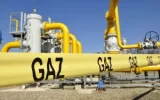Iran’s position in Eurasian pipelines

According to Energy Press; The Eurasian region has always been the scene of the competition and battle of world powers for dominance, which is of strategic importance due to the presence of Russia and Central Asian countries such as Turkmenistan and Kazakhstan with high energy reserves, especially gas, and especially the existence of pipelines. The gas of this region can reveal its sensitivity to any developments.
Pipelines in Eurasia
Despite the growing role of LNG globally, pipelines are essential for natural gas supply in Eurasia. First of all, the top four countries with the largest natural gas reserves – Russia, Iran, Qatar and Turkmenistan – are located in Eurasia. Meanwhile, approximately 93% of Russia’s natural gas exports and 95% of Norway’s gas exports are carried out through pipelines. This represents an almost entirely pipeline-based gas business. At the same time, Qatar, as the largest supplier of LNG worldwide, exports only 15% of its gas through pipelines. Most of Qatar’s gas is exported as LNG.
As the world’s largest exporter of natural gas, Russia is an important player in the Eurasian gas dynamic, and its pipelines are its main geo-economic assets. Before the Ukraine war, Europe’s natural gas supply was largely dependent on Russian gas imports, and approximately 40% of gas imports from EU member states (EU-28) came from Russia. Of course, this figure decreased to below 10% after the war in Ukraine, but recently the data indicates a slight increase. Therefore, natural gas relations and pipeline diplomacy have become an inseparable dimension of EU-Russia relations. However, following the multiple Russian and Ukrainian gas crisis and its negative impact on Europe’s security of supply, it is in the EU’s interest to move away from Russian gas and diversify Europe’s gas import structure.
However, this does not mean that EU member states have a unified approach to Russian gas. The hotly debated NordStream2 pipeline project, which would connect Russian gas under the Baltic Sea to Germany, would add another 55 billion cubic meters of Russian natural gas to European markets every year, but it is also currently stalled due to demolition. . Considering that this project will increase Europe’s dependence on Russian gas and pipelines, it has been critically considered by the European Union. Also, the TurkStream pipeline, which was officially opened in January 2020, will transport 31.5 billion cubic meters of gas from Russia directly to Turkey every year. At least a part of this gas will be available for export to Europe after completing the transportation routes and other conditions.
China is of great importance as a new and important destination in Russia’s gas export map. The “Power of Siberia” pipeline, which opened in December 2019, will allow the export of 38 billion cubic meters of Russian gas to China, and as long as the pipeline is operating at full capacity, LNG production in Russia is increasing, and the volume is expected to increase. Its export should increase to 32 billion cubic meters per year until 2040. Based on the data, Russia is planning to add at least 124.5 billion cubic meters of new export pipeline capacity to its existing pipelines. As a result, the priority of pipelines for Russia will remain unchanged for the next decade.
Access to natural gas resources largely depends on geography. A particular country with access to the sea can directly import or export LNG. In contrast, landlocked countries are much more dependent on pipelines. For example, Turkmenistan has access to the Caspian Sea, but does not have access to the world ocean.
Although Turkmenistan has the fourth largest reserves of natural gas in the world and gas export is the main source of income for this country, the export of natural gas from Turkmenistan is possible only through pipelines. For decades, the country has exported through Russia via the Central Asian pipeline infrastructure – a hub controlled by Gazprom. But since January 2016, the relations between the two countries started to decline and the gas supply was completely stopped. However, in 2019, Turkmenistan’s gas exports to Russia resumed to a limited extent. According to the new contract signed between Turkmengaz and Gazprom on July 1, 2019, an annual volume of 5.5 billion cubic meters of Turkmen gas will be exported to Russia until 2024.
Turkmenistan is currently the largest pipeline gas exporter to China, whose significant growth in natural gas demand can be partly met by domestic production and LNG imports. However, significant volumes can be exported to China through pipelines, and construction of the so-called D line from Turkmenistan to China is also on the agenda. Despite delays caused by some shortcomings in the project, in theory, the project could add another 30 billion cubic meters of pipeline capacity to the existing Central Asia-China pipelines.
Tags:pipelines
- Comments sent by you will be published after approval by site administrators.
- Comments that contain slander will not be published.
- Comments that are not in Persian or not related to the news will not be published.

Comments
Total comments : 0 Awaiting review : 0 Date: 0